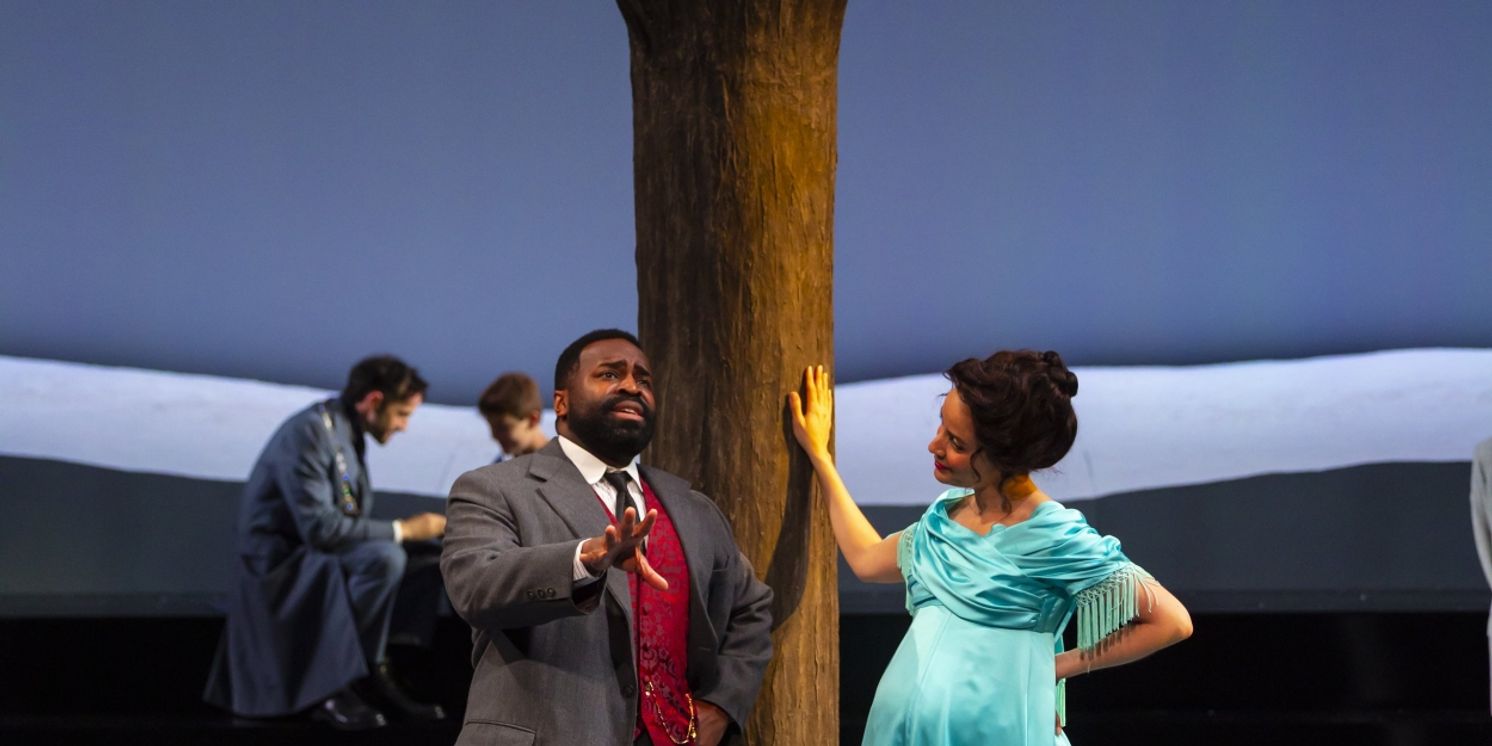Review: THE WINTER'S TALE at Hartford Stage
Shakespeare's romance onstage through May 7th

 The Winter's Tale, currently at Hartford Stage through May 7 and directed by Artistic Director Melia Bensussen, confronts an audience with a story difficult to believe from the start, whether or not one is a Shakespeare fan. Add to this Bensussen's vision, which includes problematic design elements and some unfortunate casting, and you have a version of the play that leaves us relatively unmoved. This is a shame, as The Winter's Tale is not often performed, and I was very eager to see it at this historically revered home for Shakespeare productions.
The Winter's Tale, currently at Hartford Stage through May 7 and directed by Artistic Director Melia Bensussen, confronts an audience with a story difficult to believe from the start, whether or not one is a Shakespeare fan. Add to this Bensussen's vision, which includes problematic design elements and some unfortunate casting, and you have a version of the play that leaves us relatively unmoved. This is a shame, as The Winter's Tale is not often performed, and I was very eager to see it at this historically revered home for Shakespeare productions.
Written late in Shakespeare's life and requiring a category of its own-the romance, a sub-genre shared by plays such as Pericles, Cymbeline, and The Tempest (the latter being the most structurally successful)-The Winter's Tale has numerous characters and takes place in two very different countries, seasons, and time periods (sixteen years separate Act One and Act Two). However, the central problem a director must solve is that Aristotle's "inciting incident"-the conflict that sets the plot in motion-takes place within moments of the first act and is nearly impossible to believe.
At the play's opening, Sicilia's King Leontes is entreating his life-long friend, King Polixenes of Bohemia to stay with him and his pregnant wife longer than was planned. When Polixenes demurs, Leontes asks his wife to persuade their guest. No sooner does Queen Hermione succeed, then her husband takes it into his head that she and Polixenes have been lovers and that his friend is the father of the unborn child. Leontes' mad jealousy grows so quickly that almost instantly he has attempted to kill Polixenes; imprisoned Hermione; and ordered her child, when it is born, be taken to some barren place and left to die.
The play's second act (Bensussen has streamlined the action, which is a wise choice) takes us to Bohemia, sixteen years later. Here, clowning and comedy rule, as do class clashes and banishment. As this is a romance, not a tragedy, it is not a spoiler to say that finally we return to Sicilia, where forgiveness prevails.
Unfortunately, not only does Bensussen give us little help with King Leontes' sudden and crazed obsession, but her set design (working with Cameron Anderson) is perplexing rather than illuminating. At center stage, we see the sculpted suggestion of a blasted tree, stripped of its bark and with its branches chopped off. What this tree is meant to convey-beyond winter-not only remains perplexing throughout most of the action but becomes more so towards the end. More meaningful is the back of the stage: as the play begins, two panels slide open, and we see a stark snowscape that appears to recede to the horizon. When we move to Bohemia, this landscape beautifully transforms.
However, other design elements hinder the kind of coherence that might clarify the plot. The costumes, designed by Whitney Locher, move from time period to time period, not in terms of sixteen years but in terms of centuries: we begin in what appears to be the Edwardian age, yet in Bohemia some significant characters are dressed in clothing that would sit well on movie stars of the 1960s.
Bensussen's casting and directing of the actors is somewhat more successful, especially regarding the characters in Sicilia. Nathan Darrow is an effective Leontes, though any actor playing the role needs the firm hand of a director to help him motivate the King's perplexing jealousy, and he doesn't get that here. Jamie Ann Romero plays Hermione with charm at first and then, when accused, with a perfect mix of anguish and dignity. Omar Robinson is fine as Polixenes, but the stand-out performers are Carman Lacivita as Camillo-Leontes' right-hand man-and Lana Young as the Queen's staunch defender, Paulina.
Clowning takes up much of our time in Bohemia, and though the bits go on too long, Jeremy Webb and John Maddaloni are experts. Most winning is Pearl Rhein, who provides beautiful violin music throughout the production and then in Bohemia becomes Autolycus: the consummate comic, pickpocket, and philosopher. The original music and sound design are created by Pornchanok Kanchanabanca: bravo!
Unfortunately, the actors playing the young lovers in Bohemia-Daniel Davila, Jr. and Delfin Gökhan Meehan-provide virtually no chemistry between them and demonstrate little stage presence overall. Again, one must ask how Bensussen might have helped them further.
Even less than perfect productions of Shakespeare are thought-provoking, and so it is with this one. Famously, Elizabethans went to hear a play; these actors certainly know how to "speak the speech. . . trippingly on the tongue." And there's that violin. . .
Photo credit: T. Charles Erickson
Reader Reviews
Videos

